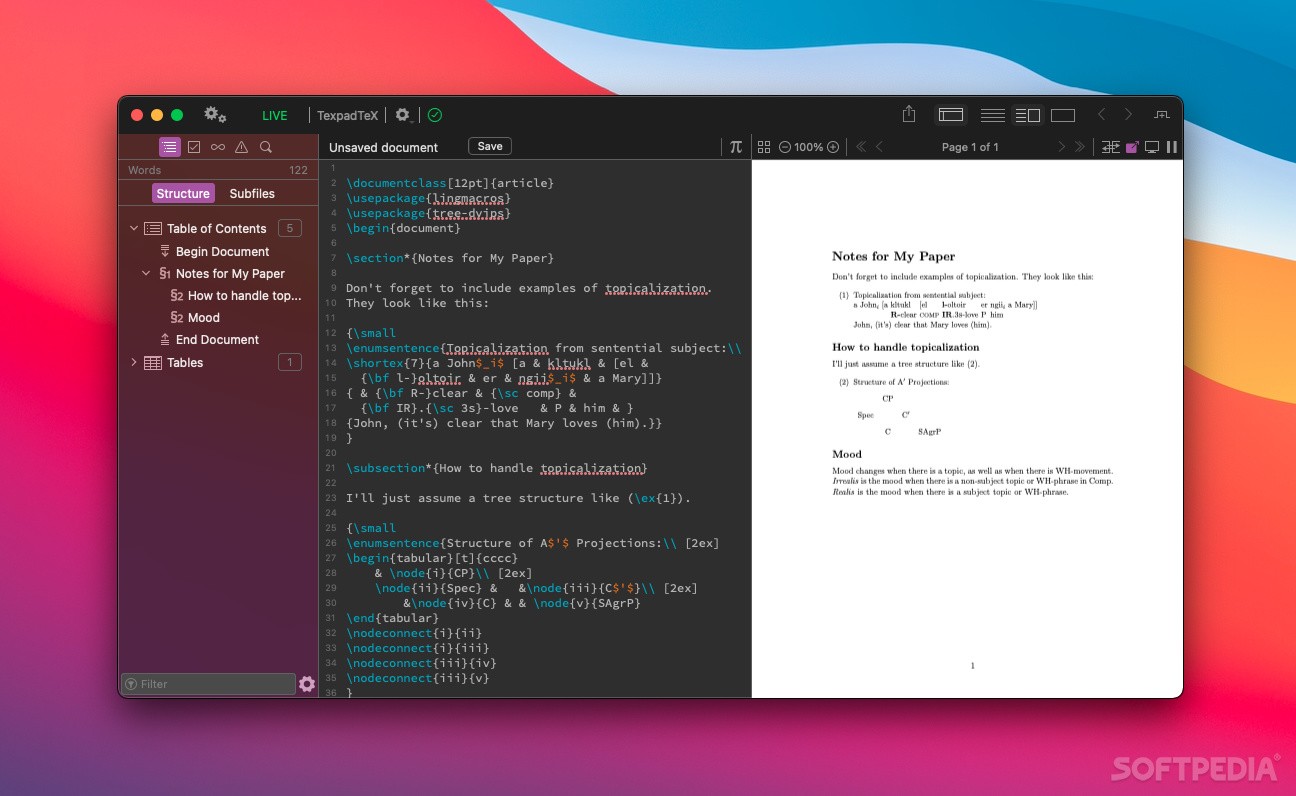


The output from the simulation will be placed in another window. If you open a Daisy setup file, you should now be able to run the simulation by opening the "Tools" menu, the "External tools" submenu, and then selecting "Daisy". Choose "3" from the "Column" drop down menu.Copy the exact string (+):(\d+):(\d+) to text field named "Regular expression to match output", replacing the old content.This time, click the box next to "Tools" to view the available tools.Now open "Configure" and "Preferences" again.It is normally located in the "bin" subfolder of the folder where you installed Daisy. Click on "Add" and choose "Program." from the drop down menu.Click on "Tools" (the name, not the small box with a beside it).If you open a Daisy setup file with a file name suffix of ".dai" with TextPad, you should now see pretty colors. The biggest gains have come from integrating the internal TexpadTeX typesetter with the graphics card using Apple’s Metal framework. Texpad 1.9 on both macOS and iOS runs faster using less memory than the 1.8 series. Exit TextPad to make the changes take effect. TextPad Quick Reference Card version 0.03 editor: John Bokma freelance programmer. As well as adding new features, in Texpad 1.9 we have also made the old features more efficient.Select "Dai.syn" from the "Syntax definition file:" drop down menu.Check the "Enable syntax highlighting" check mark box.Specify *.dai as the class members, and press "Next".Specify Daisy as the class name, and press "Next".A user with a premium subscription can link their Overleaf account to.
Texpad hyperlink install#
Copy the unpacked files (Dai.syn, Daisy.tcl, Daisy2.tcl, and Dais圓.tcl) to the "Samples" directory, below the TextPad install directory. Overleaf provides an automatic two-way sync between Overleaf and Dropbox.Fetch and unpack the TextPad Daisy support files, again follow the link.Install TextPad on you computer, and remember the installation directory.The configuration process can be divided into three tasks, first downloading and installing the files, then adding support for Daisy setup files, and finally for running the daisy command line executable (daisy.exe) from within TextPad. Highlighting of models, fixed components and parentheses in input files.When Texpad opens a document it scans through it, looking for LaTeX structure commands and any. By following the instructions on this page, you will gain: Texpad is a LaTeX editor designed for straightforward navigation of projects of any size. Although you can run Daisy from the command line or through the primitive GUI interface, by far the most convenient environment is a good text editor.


 0 kommentar(er)
0 kommentar(er)
